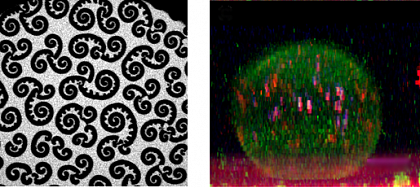Research
Our group deals with the synthesis and characterization of complex polymer systems and their applications.
• Block Copolymer Synthesis by ATRPPolyphilic block copolymers (hydrophilic, lipophilic, fluorophilic) are synthesized using macro initiators. Usually oligomers of ethylene oxide or propylene oxide are functionalized with ATRP (atom transfer radical polymerization) initiators in order to add additional blocks. The further attachment of fluorophilic units is carried out by the azide-alkine “click” reaction.
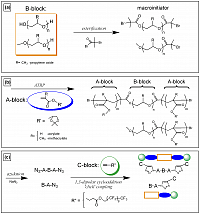
• Enzymatic Polymerization
Functional, biocompatible, and biodegradable polyesters are synthesized by enzymatic polymerization. A distinctive feature of enzymatic polymerization is that the lipase of Candida antarctica (CAL-B) can distinguish between primary and secondary OH-groups during polycondensation processes. Thus glycerol can be employed together with activated esters of dicarboxylic acids for the synthesis of linear polyesters having functional OH-groups in every polymer repeat unit.
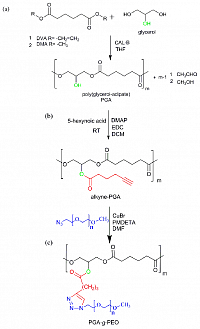
• Polymers for Pharmacy and Medicine
Hydrogels of poly(vinyl alcohol) are prepared by freeze/thawing cycles of aqueous solutions. These hydrogels can be used for adhesion prophylaxis in the peritoneum after surgery. The in vivo behavior of these gels has been studied extensively.
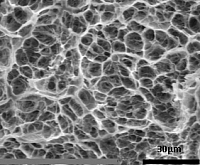
The modification of hydroxyethylstarch (HES) with fatty acids leads to amphiphilic polymers. They find applications as drug delivery systems. Furthermore, hydroxyethylstarch can be used for the modification of therapeutic proteins instead of poly(ethylene oxide).
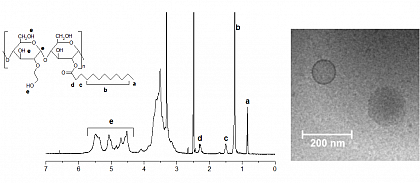
Poly(glycerol adipat) can be modified using different fatty acids which form separate phases from the polymer backbone in solutions and in bulk. Thus, they are useful as nanocarriers for drugs in pharmacy.
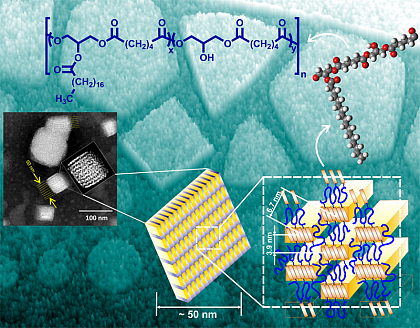
• Thermodynamic Properties of Polymers
Polymeric solids and melts can be characterized by PVT-measurements and their behavior is described by equation-of-state theories. Another important quantity is the surface and interfacial tension between polymeric solids and melts. Several polymers are studied in detail with respect to their crystallization behavior. The behavior of amphiphilic polymers in selective solvents is characterized by dynamic light scattering. The enthalpy and entropy of micellization is measured by different calorimetric methods.
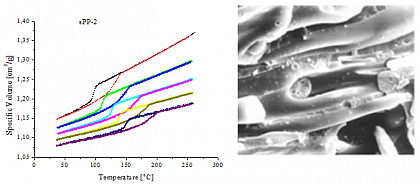
• Interactions of Block Copolymers with Lipid Membranes
These studies are focused on the structure formation of phospholipids under the influence of polyphilic block copolymers. The lipids are organized in double layers (e.g. liposomes, black lipid membranes, giant unilamellar vesicles, and living cells) or in monolayers (Langmuir films, Langmuir-Blodgett films). The interactions are studied by microscopic, spectroscopic, and calorimetric methods.
